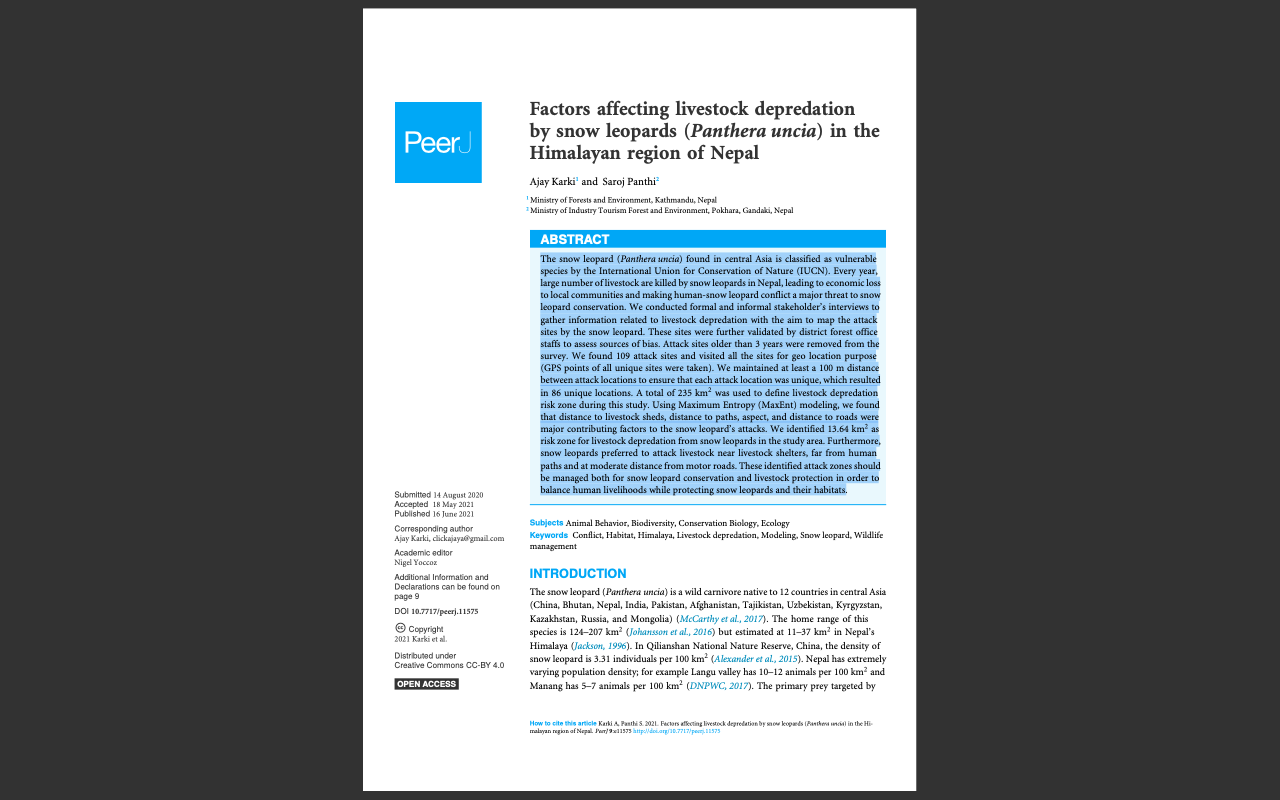
Please find details below, of a new article added to the Bibliography:
Title: Factors affecting livestock depredation by snow leopards (Panthera uncia) in the Himalayan region of Nepal
Authors: Karki, A., Panthi, S.
Abstract: The snow leopard (Panthera uncia) found in central Asia is classified as vulnerable species by the International Union for Conservation of Nature (IUCN). Every year, large number of livestock are killed by snow leopards in Nepal, leading to economic loss to local communities and making human-snow leopard conflict a major threat to snow leopard conservation. We conducted formal and informal stakeholder’s interviews to gather information related to livestock depredation with the aim to map the attack sites by the snow leopard. These sites were further validated by district forest office staffs to assess sources of bias. Attack sites older than 3 years were removed from the survey. We found 109 attack sites and visited all the sites for geo location purpose (GPS points of all unique sites were taken). We maintained at least a 100 m distance between attack locations to ensure that each attack location was unique, which resulted in 86 unique locations. A total of 235 km2 was used to define livestock depredation risk zone during this study. Using Maximum Entropy (MaxEnt) modeling, we found that distance to livestock sheds, distance to paths, aspect, and distance to roads were major contributing factors to the snow leopard’s attacks. We identified 13.64 km2 as risk zone for livestock depredation from snow leopards in the study area. Furthermore, snow leopards preferred to attack livestock near livestock shelters, far from human paths and at moderate distance from motor roads. These identified attack zones should be managed both for snow leopard conservation and livestock protection in order to balance human livelihoods while protecting snow leopards and their habitats.
